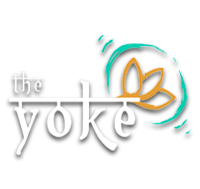Our unique strengths and personal power can have a tipping point.
The moment these two go from being helpful,
to getting in the way,
the divine play of ego is happening.
This awareness is the beginning of Yoga and the modern theory of self-leadership.
Over the last couple months, I’ve been percolating around these thoughts of ego and leadership and the study of Yoga. In the midst of the brewing a message from one of my teachers, Janet Stone, appeared in my inbox. She too spoke of ego and the trappings of false identifications. She shared this translation of a Sūtra.
dṛg-darśana-śaktyor-ekātmata-iva-asmitā
False-identification is confusing the nature of the seer or Self with the nature of the instrument of perception. In other words, false identification happens when we mistake the mind, body, or senses for the true Self.
– Yoga Sutra II.6
Do you ever fall into the habit of identification
with something that really isn’t who you are?
Experience has taught me, and Janet also noted, Yogic practices can assist us in dealing with our story-maker.
Have you ever caught yourself making up stories because
you think the person you are isn’t enough?
My answer to my own mis-leadings and mis-identifications is to engage in the all-inclusive offerings of Yoga as a form of self-study. No matter which lotus petal (see below) I choose to engage in, I am magically reminded of my true essence, big ‘S,’ Self. It assists me in moving beyond ego and the outward personas that can take over in interactions as small ‘s,’ self.
Some enter the world of Yoga through āsana, the physical postures. Another may add to this prāṇāyāma, breathing exercises and the development of life force (prāṇā) awareness. Dhyāna, the engagement of meditative-related practices, is also as common entrance point. It is also where my small ‘s’ self began to comprehend what my big ‘S’ Self is, several decades ago.
Within the analogy of an eight-petaled lotus, āsana, prāṇāyāma, pratyahara (sense awareness) and the three levels of mind awareness (dhāraṇā, dhyāna and samadhiI) each occupy a petal. What lies beneath all of these practices is the ancient philosophies of the yamas and niyamas. They comprise the last two petals of the Yoga lineage lotus. Together the yamas and niyamas are ethical guidelines for leading one’s life from within and without. Altogether these multiple threads are a guide as we live inside, what another teacher of mine calls, this “flesh suit.”
The roots of Yogic philosophy, meditative practices, prāṇā-related awareness and āsana guide me on through an all-encompassing study of self, also known as svādhyāya. Yoga/Yuj (in Sanskrit) is simply and literally translated as union. Though it is one simple word, it stands for the lifelong quest of cultivating faith in the most Divine aspect of Self.
The theories of the modern Self-Leadership model have many similar pointings to the ancient teachings within the practices and philosophies of Yoga. As I am learning through the academic studies of a PhD program there is a process to the interpretation of data, whether it is words of theories or the hard data of numbers. So, my aim over the coming time is consider how Yogic ways may be part of a modern leadership movement.
Where do our unique strengths and personal power tip us into an understanding of the divine play of ego with humbleness and self-compassion?
How are our understandings helpful and assist us in getting out of our own way?
Can such an awareness become the beginning of a new evolution in this modern Yoga movement?
So, I am curious are you willing to examine the false identifications for the sake of your ‘S’ Self?
Are you willing to join this new evolution in considering Yoga’s impact on the mat and beyond?
Do you want to discover a world within where ‘S’ Self regins supreme without an ego battles?
Yes… great let’s go!

